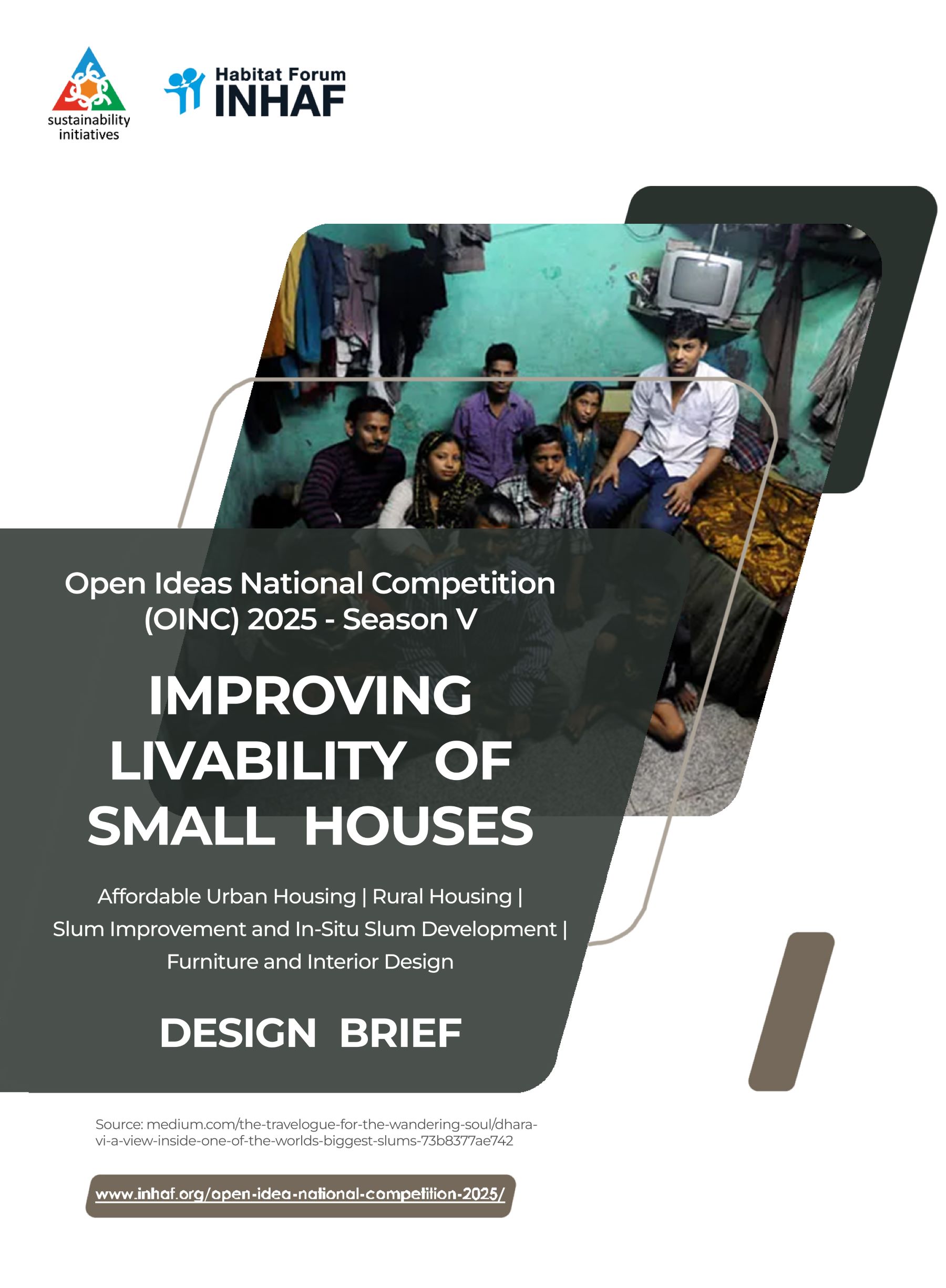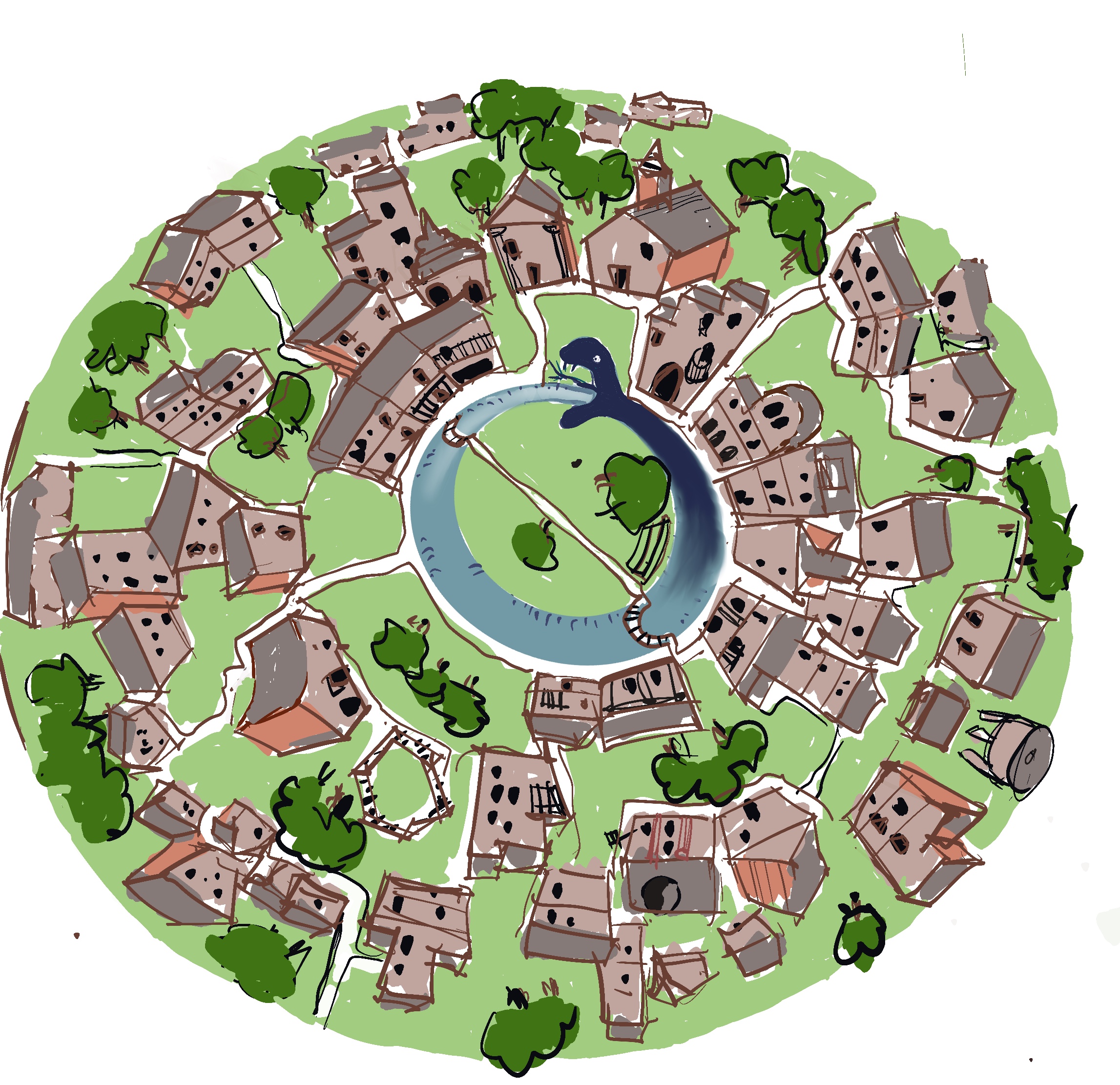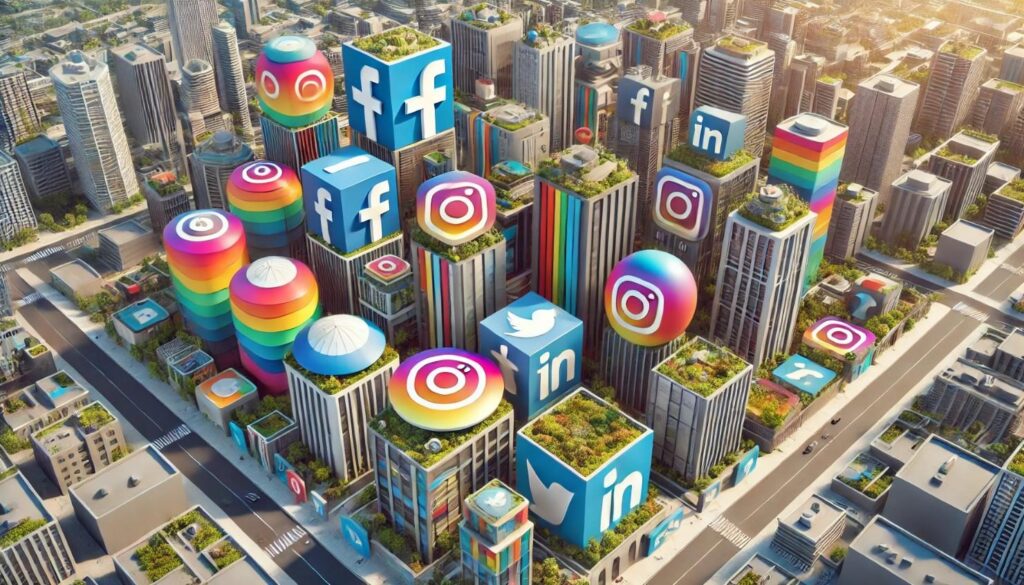
Swipe. Double-tap. Repeat. It’s astonishing how much power these simple gestures hold in our lives. Morning coffee, wardrobe choices, the dog you adopt, where to vacation, and even how to live are Instagram-informed. Architecture too, considered almost mystical due to exclusivity, has been irrevocably changed by social media. From ‘aesthetic’ images on Instagram to spirited debates on Twitter, architecture is everywhere, and everyone has an opinion. But what does this shift mean for architecture as a discipline, a profession, and a public experience?
The Double-Edged Scroll
Jeremy Till remarked on architects being seen as “remote figures of authority.” 1 Social media has pulled back the curtain, democratizing the discourse and, more importantly, the architect’s image. Buildings have transformed into digestible, shareable content. Swipe left on traditional theories of design; today’s architectural icons are as likely to be admired through a screen as (maybe even more than) they are in person.
This democratization comes with both promise and threat. While architects now have a direct line to a global audience, their work often finds itself subject to the whims of virality. A pavilion framing the sunset or a restaurant hailed as “the perfect #InstaSpot” might win the internet but leave deeper conversations about sustainability or cultural context in the shadows.
“Instagrammable” is the buzzword of the decade. Gone are the days when a design brief focused solely on function, form, and materiality. Architects like Farshid Moussavi admit that creating spaces that photograph well has become an integral part of the design process. In some ways, this is a continuation of architecture’s historic relationship with visual media (read glossy spreads in architectural magazines).
But today, the power is no longer in the architect’s hands; it belongs to the user armed with a smartphone. Firms like UNStudio and OMA have leveraged Instagram to study how people engage with spaces, blurring the lines between design feedback and voyeurism. This new feedback loop of “likes” and comments feeds into a culture where architects are both creators and curators.
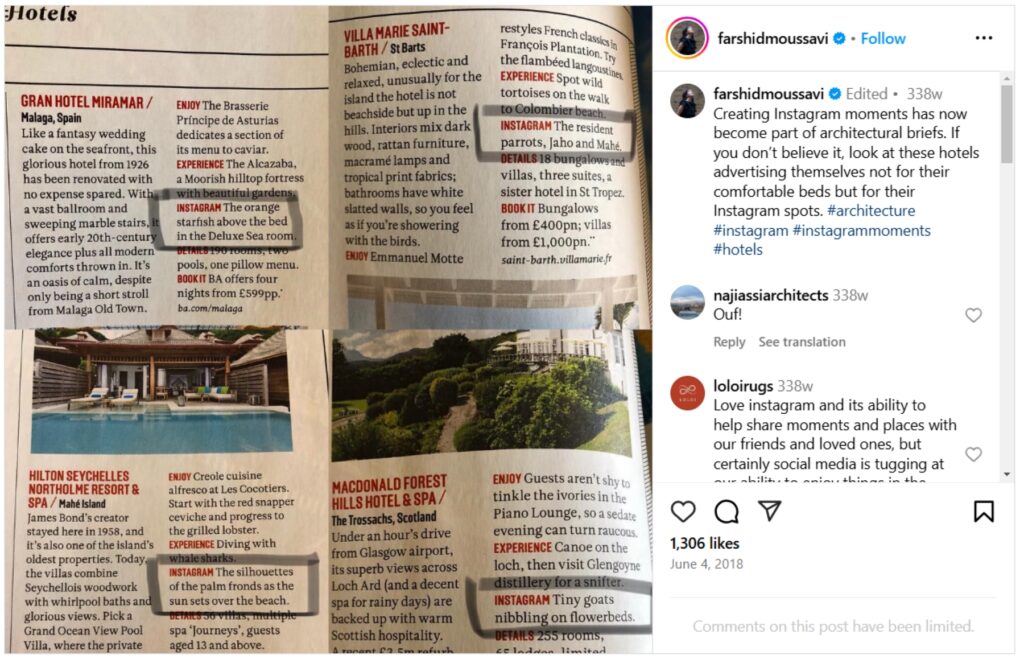
But what about the public—the millions of non-architects scrolling past high-rise skylines and minimalist interiors? For many, social media has been a gateway into a once-exclusive world. No longer is architecture the sole domain of highbrow magazines or academic circles. Instead, it lives on your feed, rubbing shoulders with fashion, food, and memes. Posts by influencers and firms spark interest, offering a crash course in design vocabulary for those who previously saw buildings as mere backdrops. Suddenly, a new generation is learning to appreciate proportions, materiality, and spatial storytelling—without even realizing it.
Flip side? As Juhani Pallasmaa warns in The Eyes of the Skin, architecture risks becoming overly ocular-centric—valuing visuals over the haptic and the experiential. A building is not just what it looks like in a photo; it’s what it feels like to walk through, how it interacts with its environment, and the stories it holds. In the race for likes, these narratives can get lost.
The public’s growing preference for instant gratification—projects with an immediate “wow” factor—can steer architectural priorities in troubling directions.
Yet, there’s hope. Social media’s capacity for conversation offers architects a chance to reclaim the narrative. Beyond dazzling visuals, platforms can facilitate meaningful discussions about sustainability, affordability, and cultural relevance—topics that go far deeper than any perfectly edited photo.
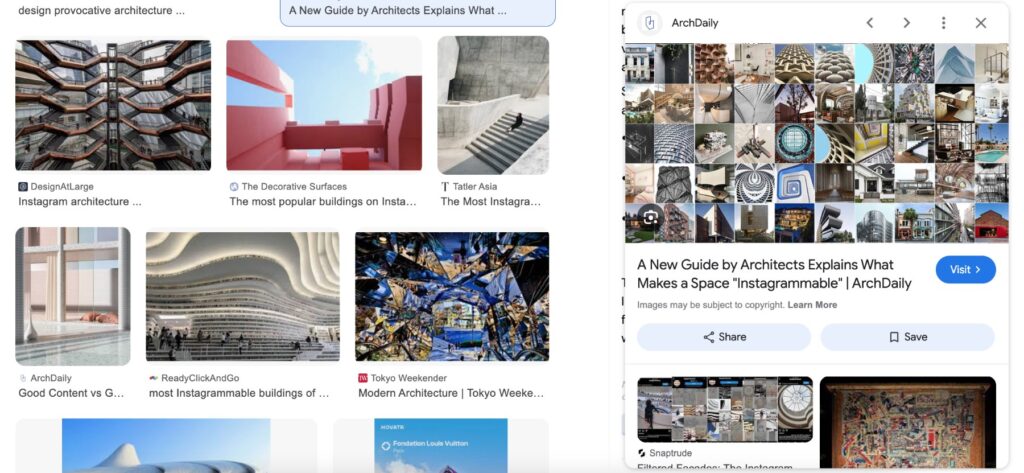
A More Inclusive Future
What excites me most about this shift is its potential to redefine the architect-public relationship. Architects are no longer the “remote” professionals Till described. They’re online, explaining their processes, responding to criticism, and embracing their role as educators and advocates.
Social media also levels the playing field for small practices and emerging voices. An innovative idea in a small town can gain global traction if it strikes the right chord. It’s a reminder that architecture isn’t just about the “big” projects—it’s about how we live, work, and play every day.
The shift to social media is not just about aesthetics or reach; it’s about redefining relationships. Architects are no longer untouchable auteurs. They’re influencers, educators, and provocateurs, engaging directly with audiences who may never step foot into a gallery or pick up an architecture journal.
This transformation holds immense potential for inclusivity. Through online content, architects can showcase projects addressing climate change, community upliftment, or innovative housing solutions, sparking public dialogue. Social media can bridge divides, inviting non-designers to critique, appreciate, and even co-create.
Some insights from an online questionnaire prepared by the author, filled by a random sample set (59 architects, 20 non-architects):
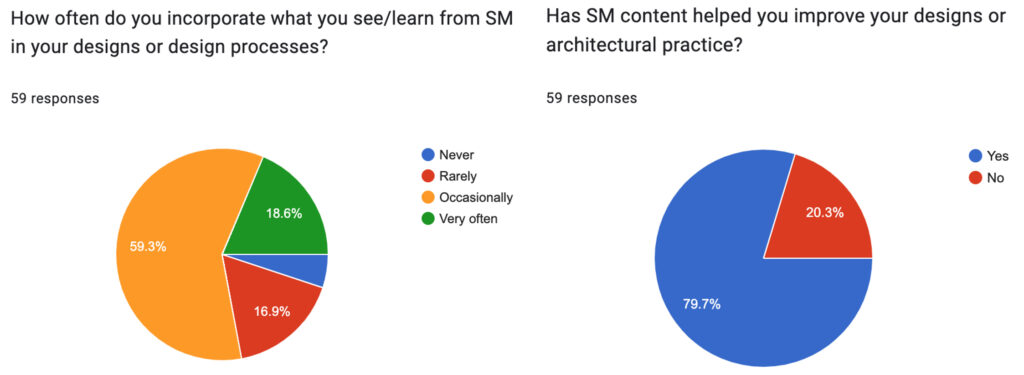
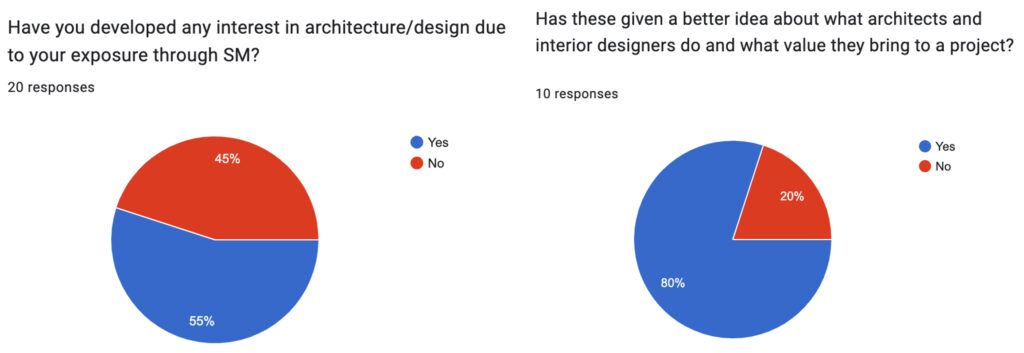
What’s Next?
The question isn’t whether social media will influence architecture—it already has. The real challenge lies in how architects and the public use it. Do we reduce architecture to fleeting trends, or do we use these platforms to ask harder questions about how we design and for whom?
As someone who oscillates between admiration for a well-curated feed and questions what’s being left out, I believe the answer lies in balance. Social media is a tool. It’s not inherently good or bad—it’s how we wield it that matters.
- Architecture Depends by Jeremy Till, published in 2009 ↩︎
Feature Image: AI Generated. @ArchitectureLive!


